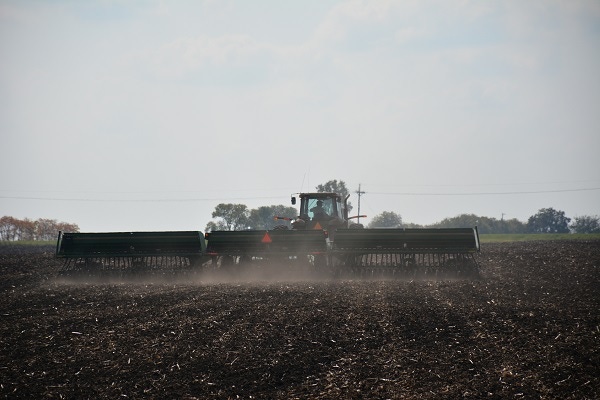November 21, 2014

The market does not consider how much it costs to produce wheat when determining the price. All the market cares about is how much wheat is needed to meet consumer demand, how much the consumer will pay, and what it costs to process and deliver the product from the farmer to the consumer.
In the short-run, production costs are not associated with market price. However, production costs are essential to determine what the market price means to the farm enterprise.
Farmers do not market wheat. Farmers market land, labor, capital, and management by producing commodities that can be sold to consumers. The commodity with the highest expected (calculated) net return is produced and sold to convert land, labor, capital, and management to dollars.
Once the commodity is produced, producers sell the commodity for the price being offered by the market. By using forward contracts, futures contracts, and/or futures option contracts, producers do have the opportunity to select prices being offered by the market over time.
Costs, yields, and prices are the key components in calculating net returns. After the commodity (wheat) has been planted and yield targets selected, the only marketing left is managing remaining costs and taking advantage of prices the market offers.
For the latest on southwest agriculture, please check out Southwest Farm Press Daily and receive the latest news right to your inbox.
For example, a producer in Grant County, Oklahoma, has a wheat target yield of 50 bushels per acre. The per acre cost to establish the crop includes land rent ($55), field work ($30), planting ($14), seed ($14), insurance ($12), and fertilizer ($44 – 50 per pound of N; $ 60 for P). The total variable cost per acre to date is $169.
Remaining variable costs between now and harvest include top-dress nitrogen ($30; 50 per pound of N via UAN), fungicide ($15), and harvesting ($35). Total variable costs are projected to be $249.
Fixed costs (taxes, insurance, and depreciation) are $25 per acre. The total cost per acre is projected to be $274.
At 50 bushels per acre, the breakeven price would be $4.98 per bushel for variable costs and $5.48 for total costs.
At this writing, the market is offering $5.59 for 2015-harvest delivered wheat. This offering implies an expected 61 cents a bushel above variable costs and 11 cent per bushel above total costs.
Knowing expected costs helps put the market offered price into perspective. Do you want a forward contract that only locks in 61 cents a bushel above variable costs and is 11 cents per bushel above the total cost of production?
One problem is a 50 percent chance that the harvest wheat price will be less than $5.59, and a possibility that the price could be $5 or less.
This situation raises several questions. The first is: “What would cause wheat prices to be less than $5.59?” The answer is that higher production than expected would probably result in lower prices. In this case, as production goes up, the break-even price comes down. Lower prices would be partially offset by higher production.
Another question is: “What marketing tools are available to insure against lower prices?” One tool is forward contracts that have already been discussed. Another is buying futures put option contracts to establish an expected minimum price.
At this writing, a KC July wheat (at the money) $6.10 put option contract costs about 40 cents per bushel. The expected minimum price would be $5.20 ($6.10 - $0.40 premium - $0.50 basis). This figure is 22 cents above variable costs and 28 cents below total costs.
Knowing production costs will not change or influence the market price. But, knowing production costs will assist in setting market price objectives and in knowing when to accept a market price.
About the Author(s)
You May Also Like






